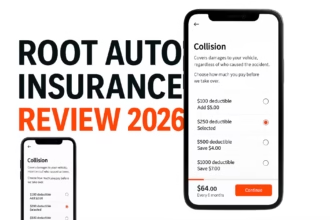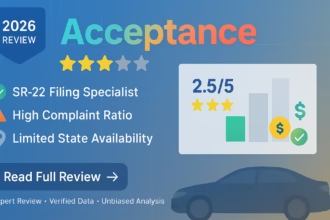Introduction

The cryptocurrency market is a volatile and ever-evolving landscape, with prices fluctuating rapidly and opportunities arising and disappearing in the blink of an eye. In such a dynamic environment, having the right tools and strategies is crucial for investors and traders alike. One of the most essential tools in a crypto trader’s arsenal is the humble chart – a visual representation of an asset’s price movements over time. In this comprehensive guide, we’ll delve into the world of crypto charts, exploring their significance, types, and how to effectively interpret them to make informed trading decisions.
The Importance of Crypto Charts
Crypto charts are the backbone of technical analysis, a widely used trading approach that relies on historical price data and market patterns to predict future price movements. By studying charts, traders can identify trends, support and resistance levels, and potential entry and exit points. This information is invaluable in a market as volatile as cryptocurrencies, where price swings can be substantial and rapid.
One of the key advantages of using charts is that they provide a visual representation of market sentiment, allowing traders to gauge the overall mood and conviction of buyers and sellers. This insight can help traders anticipate potential price reversals or continuations, enabling them to position themselves accordingly.
Types of Crypto Charts
While there are various chart types available, three stand out as the most commonly used in the crypto trading world: candlestick charts, line charts, and bar charts.
Candlestick Charts
Candlestick charts are arguably the most popular and widely used chart type among crypto traders. These charts originated in Japan and provide a wealth of information in a compact visual format. Each “candlestick” represents a specific time frame (e.g., 1 hour, 1 day, 1 week) and consists of a body and wicks.
The body of the candlestick is colored green (or white) if the closing price is higher than the opening price, indicating a bullish period. Conversely, a red (or black) body signifies a bearish period, where the closing price is lower than the opening price. The wicks (or shadows) extend from the body and indicate the highest and lowest prices reached during the given time frame.
Candlestick charts are particularly valuable because they not only show price movements but also provide insights into market momentum and volatility. Experienced traders can identify various candlestick patterns, such as dojis, hammers, and shooting stars, which can signal potential trend reversals or continuations.
READ ALSO: How to Safely Store Cryptocurrency in 2024: A Comprehensive Guide
Line Charts
Line charts are the simplest chart type, displaying only the closing prices for a given asset over time. While they lack the rich information provided by candlestick charts, line charts can be useful for visualizing long-term trends and identifying support and resistance levels.
Bar Charts
Bar charts, also known as OHLC (Open, High, Low, Close) charts, are similar to candlestick charts but use vertical bars instead of candlestick bodies. Each bar represents the price range for a given time frame, with the top and bottom of the bar indicating the highest and lowest prices reached, respectively. The opening and closing prices are denoted by horizontal lines on the left and right sides of the bar.
While bar charts may not be as visually appealing as candlestick charts, they provide the same information and can be useful for traders who prefer a more minimalistic chart style.
Reading Crypto Charts
Interpreting crypto charts is both an art and a science. While there are various technical indicators and patterns to consider, it’s important to remember that charts are not crystal balls – they provide insights into past and present market conditions but cannot guarantee future outcomes. Here are some key elements to focus on when reading crypto charts:
Trends
One of the most fundamental concepts in technical analysis is the identification of trends. An uptrend is characterized by higher highs and higher lows, while a downtrend is defined by lower lows and lower highs. Trendlines can be drawn on charts to visually represent these trends and assist in identifying potential support and resistance levels.
Support and Resistance Levels
Support and resistance levels are crucial elements in chart analysis. Support levels represent price points where buying pressure is expected to overcome selling pressure, potentially halting or reversing a downtrend. Resistance levels, on the other hand, indicate price points where selling pressure is likely to overpower buying pressure, potentially stalling or reversing an uptrend.
By identifying these levels, traders can make more informed decisions about entry and exit points, as well as potential areas for Stop Loss and Take Profit orders.
Candlestick Patterns
As mentioned earlier, candlestick patterns can provide valuable insights into market sentiment and potential trend reversals or continuations. Some common patterns to be aware of include:
Doji: A doji is formed when the opening and closing prices are nearly identical, resulting in a small body with long wicks. It signals indecision and can be a potential reversal signal.
Hammer and Hanging Man: A hammer occurs at the bottom of a downtrend and is characterized by a small body with a long wick below, indicating support and a potential bullish reversal. The hanging man is the opposite, occurring at the top of an uptrend and signaling a potential bearish reversal.
Engulfing patterns: An engulfing pattern consists of two candlesticks, where the second candlestick completely engulfs the body of the first. A bullish engulfing pattern can signal a potential trend reversal from bearish to bullish, while a bearish engulfing pattern can indicate a potential reversal from bullish to bearish.
It’s important to note that while candlestick patterns can be valuable tools, they should always be considered in the context of the overall market and combined with other technical indicators and analysis techniques.
READ ALSO: How to Buy Metaverse Crypto in 2024: A Comprehensive Guide
Using Technical Indicators
In addition to studying price movements and patterns, crypto traders often employ various technical indicators to gain deeper insights into market conditions and potential trading opportunities. Here are some of the most popular indicators used in crypto trading:
Moving Averages
Moving averages are one of the most widely used technical indicators. They smooth out price data by calculating the average price over a specified period (e.g., 50 days, 200 days). Traders often use moving averages to identify trends, as well as potential support and resistance levels.
A common strategy is to use the 50-day and 200-day moving averages as indicators of short-term and long-term trends, respectively. When the 50-day moving average crosses above the 200-day moving average, it is considered a bullish signal (known as a “golden cross”), while a crossover in the opposite direction is considered bearish (a “death cross”).
Relative Strength Index (RSI)
The Relative Strength Index (RSI) is a momentum oscillator that measures the speed and magnitude of price movements. It ranges from 0 to 100, with values above 70 typically considered overbought (indicating a potential bearish reversal) and values below 30 considered oversold (indicating a potential bullish reversal).
Traders often use the RSI in conjunction with other indicators and chart patterns to identify potential entry and exit points, as well as to gauge the strength of a trend.
Moving Average Convergence Divergence (MACD)
The Moving Average Convergence Divergence (MACD) is a trend-following momentum indicator that calculates the difference between two exponential moving averages (typically the 12-day and 26-day EMAs). It is often used to identify potential trend reversals and trading signals.
When the MACD line crosses above the signal line (a 9-day EMA of the MACD), it is considered a bullish signal, while a crossover in the opposite direction is considered bearish. Additionally, divergences between the MACD and price action can signal potential reversals.
Best Practices for Using Crypto Charts
While crypto charts can be powerful tools for traders, it’s essential to approach them with a well-rounded strategy and proper risk management practices. Here are some best practices to keep in mind:
Combine Chart Analysis with Fundamental Analysis
While technical analysis is focused on price movements and market patterns, fundamental analysis considers the underlying factors that influence an asset’s value, such as project developments, adoption rates, and regulatory changes. By combining both technical and fundamental analysis, traders can gain a more comprehensive understanding of the market and make more informed trading decisions.
Use Multiple Time Frames
Successful traders often analyze charts across multiple time frames (e.g., 1-hour, 4-hour, daily, weekly) to get a more complete picture of market trends and potential trading opportunities. Short-term time frames can help identify intraday patterns and entry/exit points, while longer-term time frames can reveal broader trends and support/resistance levels.
Backtest Your Strategies
Before implementing any trading strategy, it’s crucial to backtest it using historical data. This process involves applying your strategy to past market conditions and evaluating its performance. By backtesting, you can refine your approach, identify potential flaws, and gain confidence in your strategy before risking real capital.
Manage Risk Effectively
Cryptocurrency trading carries inherent risks, and it’s essential to implement proper risk management techniques. This includes setting stop-loss orders to limit potential losses, using appropriate position sizes, and diversifying your portfolio across multiple assets and trading strategies.
Stay Disciplined and Unemotional
Trading can be an emotional rollercoaster, and it’s easy to get caught up in the excitement of potential gains or the fear of losses. Successful traders remain disciplined, sticking to their predetermined strategies and avoiding impulsive decisions driven by emotions.
Popular Crypto Chart Platforms
With the importance of crypto charts established, let’s explore some popular platforms and tools that traders can use to access and analyze these valuable resources.
TradingView
TradingView is one of the most popular and comprehensive charting platforms in the crypto space. It offers real-time data, advanced charting capabilities, and a vast array of technical indicators and drawing tools. Additionally, TradingView boasts a vibrant community where traders can share ideas, strategies, and custom indicators.
Coinigy
Coinigy is a powerful all-in-one platform that combines portfolio tracking, charting, and trading capabilities. It supports over 40 cryptocurrency exchanges and offers advanced charting tools, including customizable indicators and automated trading strategies.
CryptoWatch
CryptoWat.ch is a user-friendly cryptocurrency tracking platform owned by the Kraken exchange. It provides real-time market data, customizable watchlists, and advanced charting tools across multiple exchanges, making it a valuable resource for traders and investors alike.
GoCharting
GoCharting is a versatile charting tool that caters to traders across various markets, including cryptocurrencies, forex, stocks, and futures. It offers a range of chart types, technical indicators, and educational resources, making it suitable for both novice and experienced traders.
Conclusion
In the dynamic and ever-changing world of cryptocurrency trading, having the right tools and strategies is paramount. Crypto charts, when used effectively, can provide invaluable insights into market trends, sentiment, and potential trading opportunities. By mastering the art of chart analysis, combining it with fundamental analysis, and employing proper risk management techniques, traders can navigate the volatility of the crypto market with greater confidence and increase their chances of success.
Remember, crypto charts are not crystal balls – they are tools that require patience, discipline, and ongoing education. Successful traders continuously refine their strategies, adapting to changing market conditions and staying ahead of the curve. With dedication and a commitment to continuous learning, you too can unlock the power of crypto charts and embark on a rewarding trading journey in the exciting world of cryptocurrencies.
READ ALSO: How to Invest in Crypto Without Buying Crypto: A Comprehensive Guide to Indirect Investment Options
Frequently Asked Questions
How do you read cryptocurrency charts?
Reading cryptocurrency charts involves understanding the different chart types (candlestick, line, bar), identifying trends, support and resistance levels, and interpreting candlestick patterns and technical indicators. It’s a practice that requires patience, discipline, and ongoing education.
What are the best technical indicators for cryptocurrency trading?
Some of the most popular technical indicators used in cryptocurrency trading include moving averages, the Relative Strength Index (RSI), the Moving Average Convergence Divergence (MACD), and Bollinger Bands. However, the effectiveness of these indicators can vary depending on market conditions and trading strategies.
Can crypto charts predict the future?
No, crypto charts cannot predict the future with absolute certainty. They are tools that provide insights into past and present market conditions, which can be used to identify potential trading opportunities. However, the cryptocurrency market is highly volatile and unpredictable, and past performance is not a guarantee of future results.
How do I choose the right charting platform for my trading needs?
When choosing a charting platform, consider factors such as the range of features offered, the user interface, the availability of real-time data, the supported exchanges and assets, and the cost (if applicable). Additionally, platforms with strong communities and educational resources can be valuable for learning and sharing trading ideas.
Can I use crypto charts for long-term investing?
While crypto charts are primarily used for short-term trading, they can also be valuable for long-term investors. By analyzing long-term trends, support and resistance levels, and indicators like moving averages, investors can identify potential entry and exit points for their long-term positions.
In another related article, Cryptocurrency and Privacy: Securing Your Digital Identity with Blockchain





